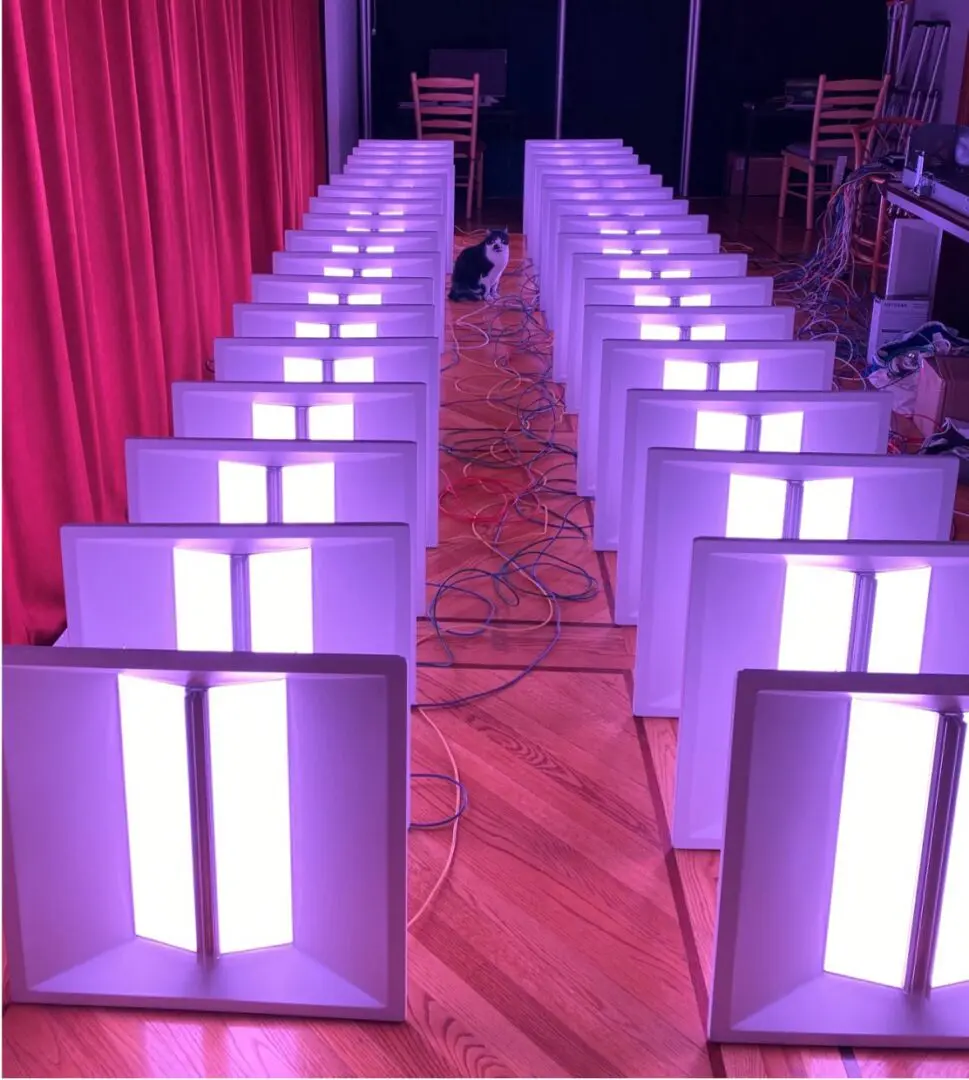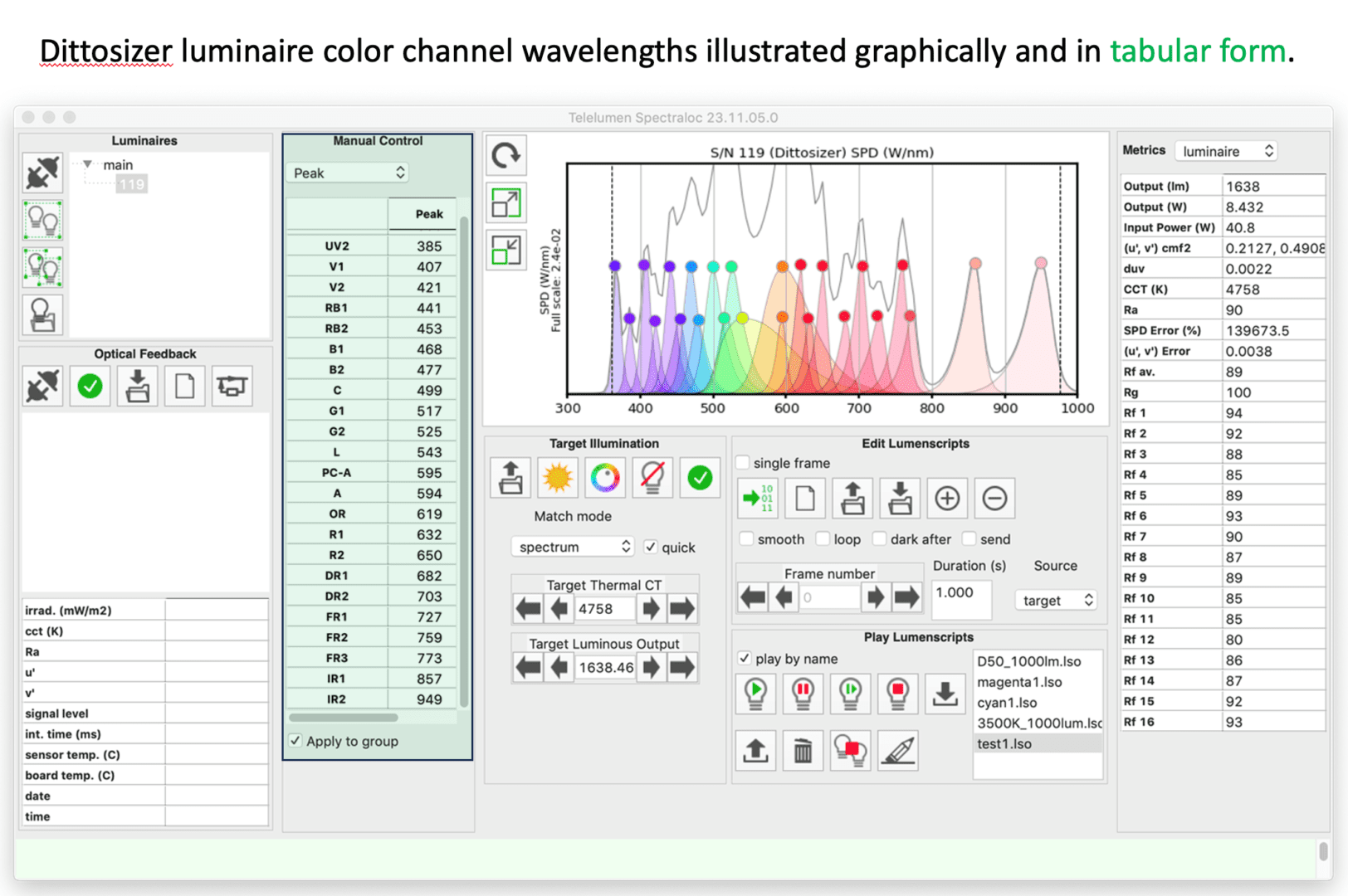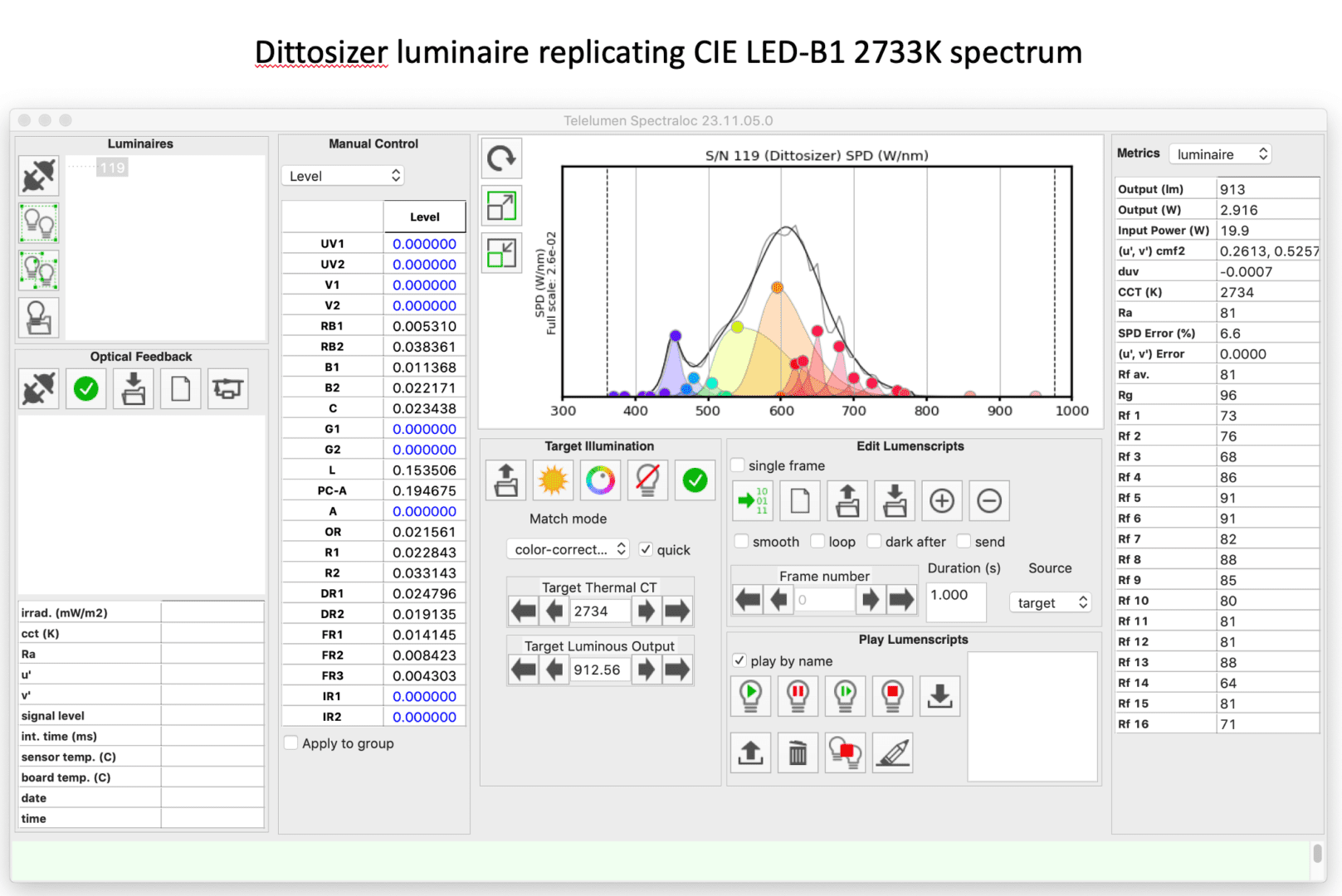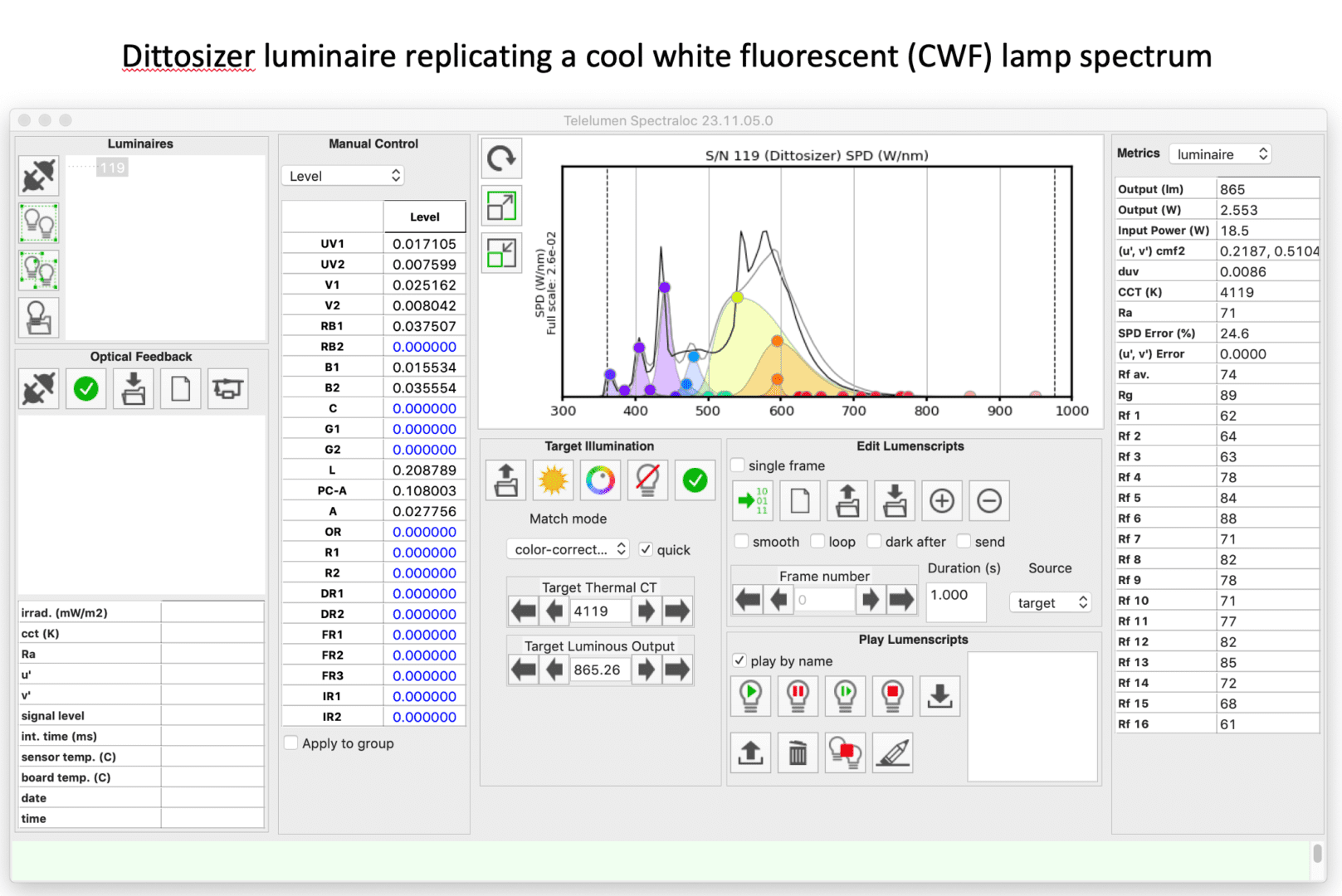
Telelumen Software Overview
Telelumen luminaires are precision instruments controlled by computer software that gives the user incredible flexibility and ease of use. The luminaire can be used as a scientific instrument or a consumer “light player” akin to a music player that plays light “tunes” over time. Each luminaire can be networked over Ethernet, put into a group, and “broadcast” spectra either as an individual or as part of a group as desired. The luminaire can dynamically vary the light output “volume” and the spectrum over time.
INTERFACE
The graphical user interface (shown at right) allows specifying the luminaire output – Target Illumination - using several different parameters, for example, color temperature (CCT) and luminous output, or chromaticity ((xy) or (u', v')) and luminous output - either by directly entering the desired values, or by interacting with the chromaticity diagram. Target illumination may also be provided as a data file of a spectral power distribution or inputting an industry standard text file specifying the output for each color channel.
The screenshot on the right shows Octa luminaire replicating a thermal radiator at 4000K using the built-in “regular palette” match function. This match option optimizes color rendering (Ra, Rf) and the resulting spectrum photo-Metrics are reported on the right side.
There are other match functions in the dropdown menu including “spectrum” which minimizes the error between the target and synthesized SPDs without regard for photometrics. In addition to using the built-in functions, individual channels can be adjusted manually by grabbing one of the large colored dots on the graph, like an audio graphic equalizer, or entering values in the table in the manual control section.
The software translates these light configuration commands to an individual spectrum to be produced by the multi-LED luminaire, using proprietary optimization algorithms. The software uses the black body or daylight locus as references to calculate spectra and reports many critical metrics such as IES TM-30-15 color fidelity and gamut index values (Rf, Rg), duv or the magnitude of any SPD and u’v’ errors in the Metrics table on the right side. The software calculates all results to achieve a consistent and repeatable output.




DITTOSIZER
The Dittosizer luminaire has several advantages over Octa. The primary advantage is that it has a much wider spectral power distribution from UVA to NIR and with three times the color channels. The 24 channels of the Dittosizer are shown on the left in graphic and tabular form (wavelength in nanometers). Another advantage is that it has twice the optical power output of the Octa luminaire.
The lower two screenshots shown on the left, illustrate some of the Dittosizer capabilities. Using its 24 color channels, it can more closely replicate complex target spectral power distributions (SPDs) such as typical white LEDs or cool white fluorescent lamps (CWFs).
LIGHT PLAYER
Telelumen luminaires can “play” changing light output over time. Each light output configuration (spectrum) and its time duration is considered a “frame”. Multiple frames are stacked together to vary the output spectrum with time and these routines are called “Lumenscripts”. They can be used to develop sequences which can automatically sweep through CRI or CCT or other light quality parameters over time, play custom light “tunes” or data as stimulus for experimentation. The software automatically calculates smooth transitions between output changes (frames). A custom editor, highlighted in the screenshot on the right, facilitates creation of Lumenscripts.


ADVANCED EXAMPLES
The two software interface screenshots shown at left, demonstrate the power of systems with more than three primary colors and the power of the Telelumen software. Multiple color systems have many possible solutions for a given chromaticity. Here, we are depleting, or boosting (2nd screenshot), the region of the spectrum that impacts circadian rhythm with minimal impact to the chromaticity as reported in the Metrics table. It may appear in the graph as though the LED colors are moving sideways, however what is really happening is the software is employing adjacent color channels in finding an alternate solution that also maintains photo-Metrics.

OTHER ADVANCED FUNCTIONS
Other advanced functions for light control include the capability for manually tweaking software-generated spectra using the graphical interface, and for ultimate control of the luminaire, low level APIs are available to give the user access to internal parameters that are needed for functions such as synchronizing with other external user devices.
